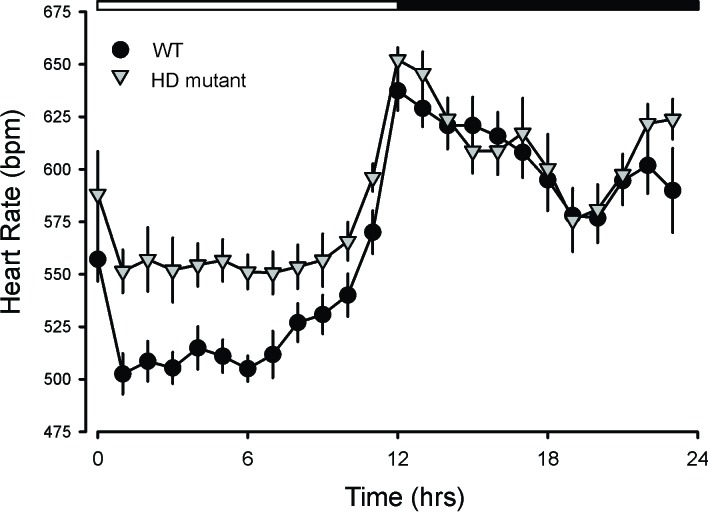Figure 4.
HR varies dramatically with a daily cycle in which HR is high during the active part of the sleep/wake cycle. As measured by telemetry, HD mutants (BACHD and Q175) exhibited highly pronounced tachycardia during their normal sleep time, with high HR and reduced amplitude in the HR rhythm. These changes suggest that ANS disruption occurs early in disease progression in these mutant lines. In agreement, we also saw evidence in the BACHD of the circadian system failing to lower blood pressure (BP) during sleep [32]. The HR rhythm is also disrupted in R6/1 [44], R6/2 and HdhQ150 lines [49]. Therefore, overlapping data from several studies using different mouse models all found evidence for disrupted diurnal or circadian rhythms of HR. We have not seen evidence that this has been examined in HD patients, but the pre-clinical data supports 24-hr monitoring in patients.

